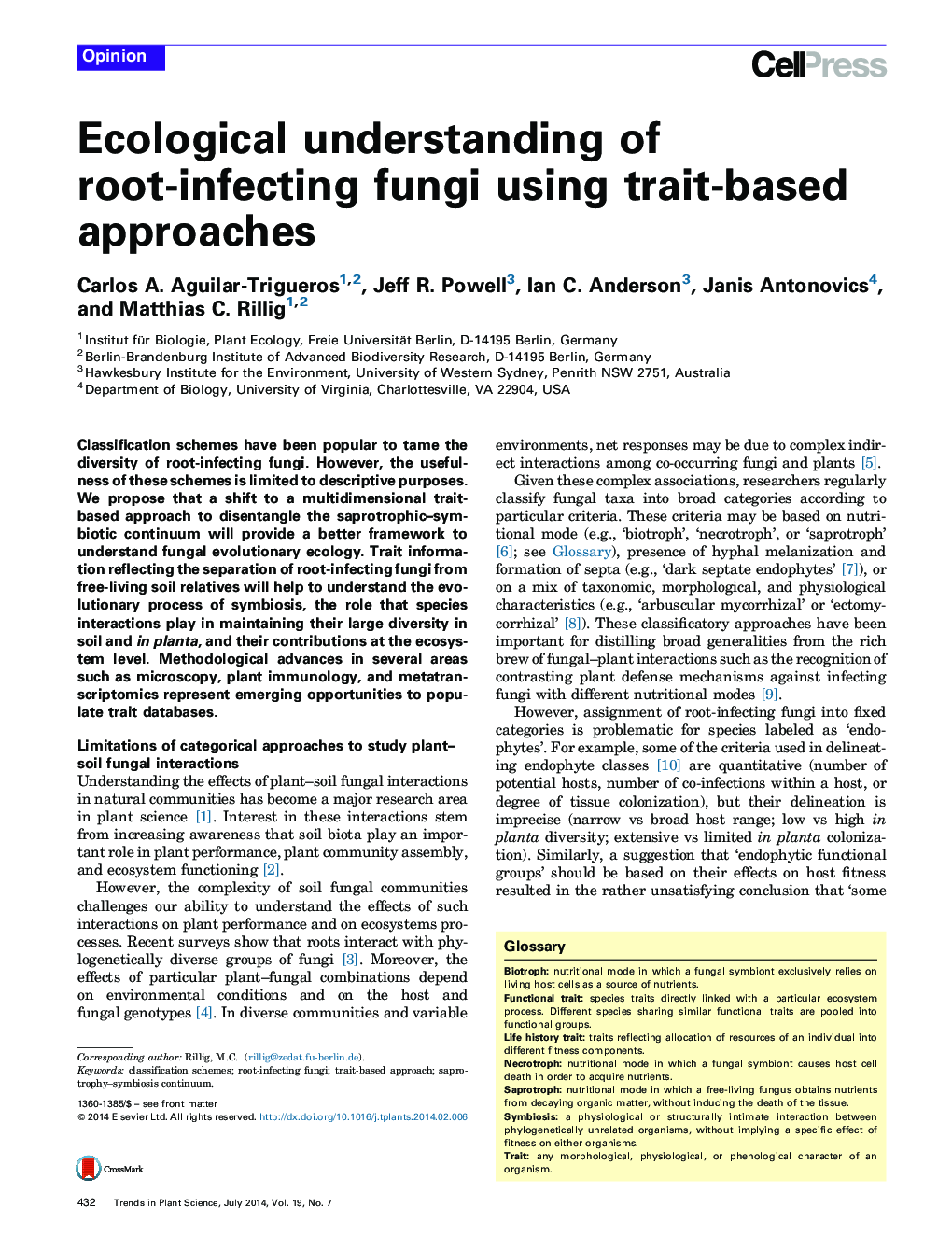| Article ID | Journal | Published Year | Pages | File Type |
|---|---|---|---|---|
| 2825952 | Trends in Plant Science | 2014 | 7 Pages |
•Research on the diversity of root-infecting fungi is hampered by descriptive classification paradigms.•We propose a trait-based framework disentangling the saprotrophic–symbiotic continuum.•This framework will provide inroads into the evolution and ecology of fungal–root associations.
Classification schemes have been popular to tame the diversity of root-infecting fungi. However, the usefulness of these schemes is limited to descriptive purposes. We propose that a shift to a multidimensional trait-based approach to disentangle the saprotrophic–symbiotic continuum will provide a better framework to understand fungal evolutionary ecology. Trait information reflecting the separation of root-infecting fungi from free-living soil relatives will help to understand the evolutionary process of symbiosis, the role that species interactions play in maintaining their large diversity in soil and in planta, and their contributions at the ecosystem level. Methodological advances in several areas such as microscopy, plant immunology, and metatranscriptomics represent emerging opportunities to populate trait databases.
